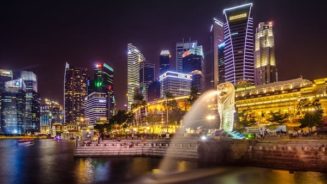The Asia division generated total IFRS profit before tax of £709m, up 32% on last year. Asia is one of four divisions the group has – the others being Jackson in the US, Prudential UK and its asset management division which includes M&G in the UK. The group also recently launched a single brand for its Asia asset management business called Eastspring Investments.
As well as significant growth in Asia, Prudential said its four divisions had all become “materially cash generative for the first time”, with each paying large remittances providing Prudential with £1.1bn cash. This includes Jackson, which paid £322m – its biggest ever remittance to the group, while Prudential UK and Asia paid £577m and £206m respectively.
Group chief executive Tidjane Thiam said, due to 2011’s full year results, he is confident the company will reach its target, part of its “cash and growth” strategy announced in December 2010, of generating £350m, £300m and £200m of cash in 2013 from the UK, Asia and Jackson respectively.
South East Asia “sweet spot”
Looking specifically at its Asia business, Prudential said in its “sweet spot” of South East Asia, growth has been largely led by the “rising market” of Indonesia – its biggest Asian business – as well as the more developed economies of Hong Kong, Singapore and Malaysia. Prudential added that these operations are generating sustainable growth and value, which in turn supports its investments in more emerging markets such as the Philippines, Vietnam and Thailand.
“Prudential has delivered another strong performance in 2011 led by Asia, where our life insurance business for the first time became the single largest contributor to our group IFRS operating profit. Since 2008, Asia’s contribution to this benchmark profit measure has almost trebled from £257m to £709m,” said Thiam.
“As a group, we have continued to grow across our key metrics of IFRS, new business profit and cash while maintaining a robust capital position. This performance has been achieved against both a more challenging global economy in 2011 and the demanding comparator of 2010, our best year ever until now. In line with our strategy of value optimisation and capital conservation, higher sales and higher profit in 2011 have been achieved while consuming less capital in both relative and absolute terms than in 2010.”
On the contentious issue of Solvency II and whether or not Prudential will indeed move its headquarters from London, as has been speculated upon many times, Thiam was unwilling and, according to him, unable to give a definitive answer. He did however confirm that, as well as holding continuing to discussions with Prudential’s peers, policymakers and regulators over the rules, the group is “considering its options”.
He said: “We are supportive in principle of the development of a more risk based approach to capital but we have concerns about the potential consequences of some aspects of the Solvency II regime under consideration. We will continue to debate the development until the final outcome of Solvency II remains uncertain.
“We are continuing to engage directly with our peers, with policymakers and with regulators so that the industry ultimately operates under a fair, effective and reasonable capital adequacy regime.
Lack of certainty over the policy content and timetable continues to impede the industry’s ability to prepare fully for the new regime. Therefore, in parallel to continuing our preparation for eventually implementing the Solvency II rules, we also evaluate our options to mitigate its possible negative effects. We regularly review the range of options available to us to maximise the strategy for stability of the group and for all these options consider the best way of optimising the profit of the business, including as a possible response to Solvency II.”




